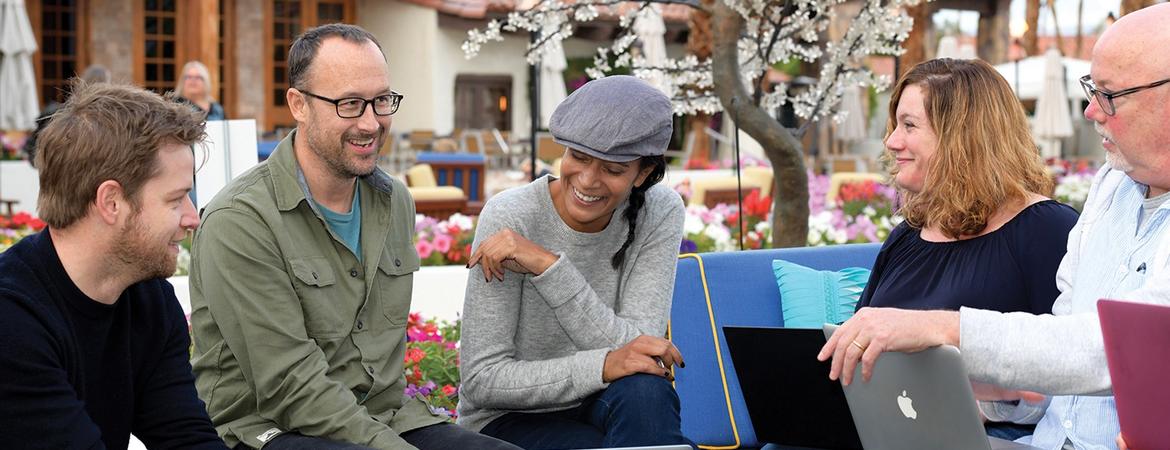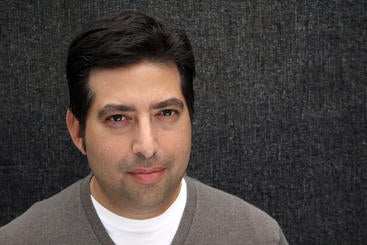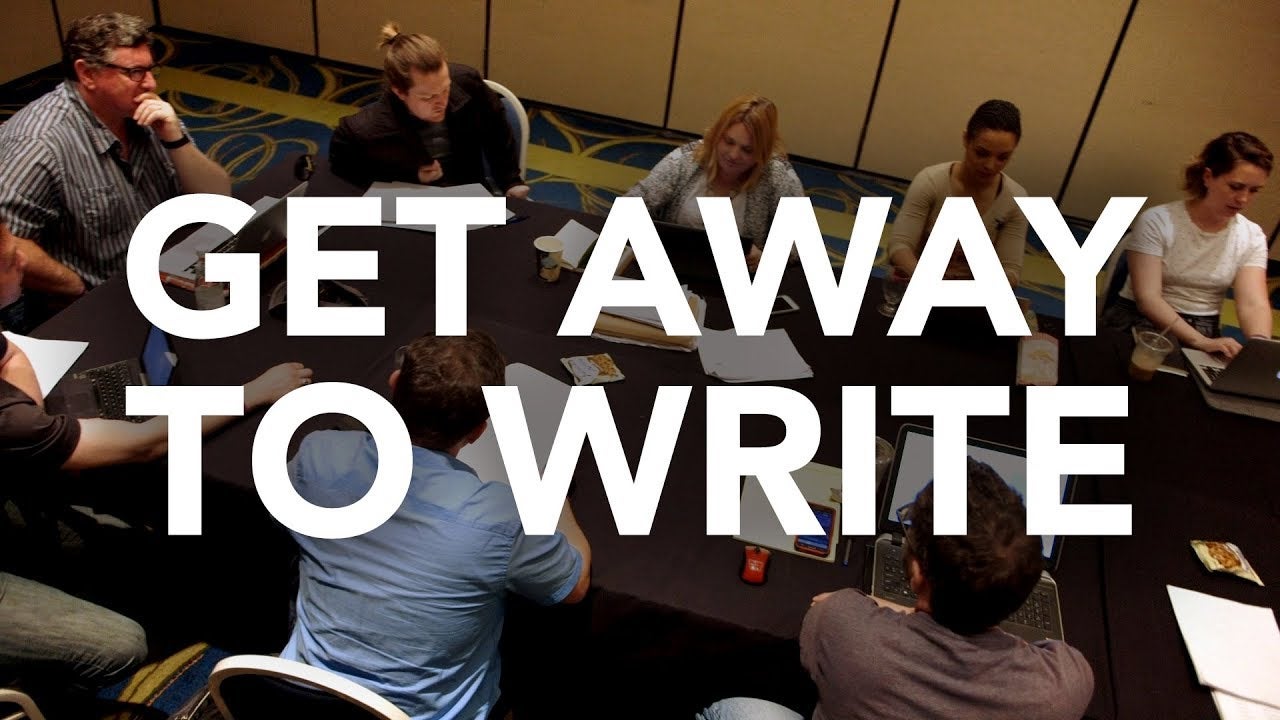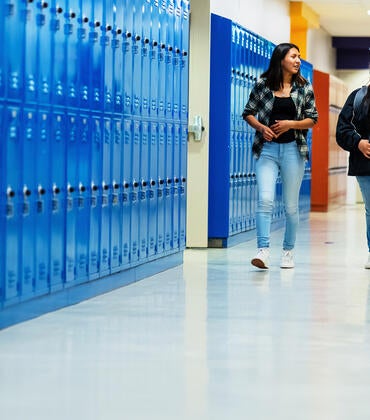
While universities nationwide are grappling with the sudden transition to remote learning amid the global crisis caused by COVID-19, UCR’s Low-Residency MFA program for creative writing and writing in the performing arts, based out of UCR’s Palm Desert campus, has used remote learning models since its inception.
As such, the program’s facilitators have plenty of insight to offer instructors and students adjusting to an unfamiliar form of teaching and learning.
The low-residency program, which began in 2008 and remains the only one of its kind in the UC system, is conducted entirely online except for two 10-day residencies in June and December.
Tod Goldberg, a bestselling author and writing professor who has served as the program’s director since its start, said he insisted the program incorporate online learning tools as few low-residency MFA programs used them, and according to Goldberg, many still don’t.
“I didn’t think the idea of actually mailing work back and forth — as many low-residency programs still do — was a very intensive way to do the work we wanted to do,” he said. “Low residency doesn’t mean low impact. I wanted our students to have a rigorous experience, and the success of the students surely leads me to believe it’s been the right choice.”
The remote model of the program affords many benefits for students, as it creates more freedom for them to work at their own pace, manage a full-time work schedule, and live anywhere in the world, while still maintaining a strong academic community.
“The ability to deliver the quality of the UC education wherever a person might be physically enhances their chances to succeed in their field,” Goldberg said. “As we’re all finding out, it is possible to work — and work well — in your pajamas.”
As is now the case for most of the UCR campus, which is adjusting to remote learning for the remainder of the academic year, the low-residency program relies primarily on UCR’s Blackboard platform, iLearn, to post lectures, distribute course materials, and set up discussion boards, among other things.
Jill Essbaum, who has been teaching in the program for 10 years, has found a lot of utility in using Blackboard, noting it provides many different opportunities to engage.
“I post stories or poems; I link to websites; I pose questions and ideas to consider — and it works,” Essbaum said. “It was quite surprising to me initially how fluid and fertile the discussions could become. When the conversation must be written out, it's invariably more considered, and it stays with the students.”
While a remote mode of teaching does have many benefits, instructors also acknowledge there can be challenges to conducting classes and discussions online, especially if it’s not something students and teachers are used to, and therefore requires a bit of effort and ingenuity.
“It’s just more difficult to get to know your students,” said Mark Haskell Smith, a core faculty member. “You're not seeing them face-to-face, and so nuances like someone’s sense of humor can get lost.”
In order to mitigate these challenges, Haskell Smith said he tries to have phone conversations or set up video conferences with students through Zoom at the beginning of each quarter.
“I try to get a feel for who they are, what their needs and goals are, and how best I can help them,” he said. “I always make myself available for a phone conversation if a student has any questions or concerns.”
Goldberg said remote teaching cannot be approached the same way as in-person teaching, and it’s important to foster community through the online tools at hand.
In addition to virtual office hours and individual check-ins with students, he advocates making online spaces conducive to both academic and nonacademic engagement, and suggests making spaces available on Blackboard just for students to talk to one another about things outside of their studies and without interaction from their professors. He also advises setting up a space for open discussion between students and instructors about their classwork.
“It’s not simply about the delivery method,” Goldberg said. “It’s about the human experience, about understanding what each student needs individually during this time while also understanding that as faculty, we need to take care of the change in our own bandwidth.”
Emmet Browne, a student set to graduate from the program in June, has found the remote model to be highly beneficial, especially the absence of a fixed schedule, which allows him to better organize work and social activities.
“Everything is on me, which leaves room for me to not only develop my learning style and manage my time, but to be creative in how I learn and process my studies,” Browne said. “I would try to see this as an opportunity to grow in self-awareness about your learning style, to discover what works best for you.”
Lindsay Gallagher, who will also be graduating in June, said remaining engaged in the program affords some welcome structure to the disruption caused by the pandemic.
“School hasn’t been terribly affected, but my brain has — it’s very hard to focus,” Gallagher said. “Now my schedule is harder to plan, and it’s all out of whack. We’re back in session now, so that should help keep me on track.”
For faculty managing this new transition, Essbaum said it’s important to keep students engaged, noting the material must hold their interest and instructors must be able to keep a captive audience. But she also notes the importance of being patient with yourself and not trying to overcompensate by doing too much to make up for the lack of in-person interaction.
“It’s not hard to find the balance, but it’s good to be aware that it might take a while to calibrate yourself,” she said.
Haskell Smith encourages instructors to make Blackboard a fun place for students to engage by posting things like music and YouTube videos, and to not use it as a purely academic tool. He also notes remote teaching has its own benefits for faculty.
“Working at home may seem lonely at first, but the hours are your own, there's no commute, no dress code, and the coffee is a million times better,” he said.
For Goldberg, the most important thing for everyone trying to manage their teaching and education under the incredible circumstances posed by the coronavirus is to stay connected.
“In the midst of chaos, the students really need to know there is ground beneath their feet, and frankly, so do the professors,” he said. “The thing we all know is that bad things happen and there is an ‘other side’ — the light at the end of the tunnel is not a train. It’s so easy for all of us to feel isolated in a traumatic situation, so you must have that human contact, even if it’s just another voice.
“Art rises out of trauma. I expect that my students will chronicle this time in unique and inspiring ways. We’ll need that.”
Header Image: MFA students with professor Mark Haskell Smith (far right) during a 10-day residency in 2018 at the Omni Rancho Las Palmas Resort & Spa in Rancho Mirage, California. (UCR/Rosema)





